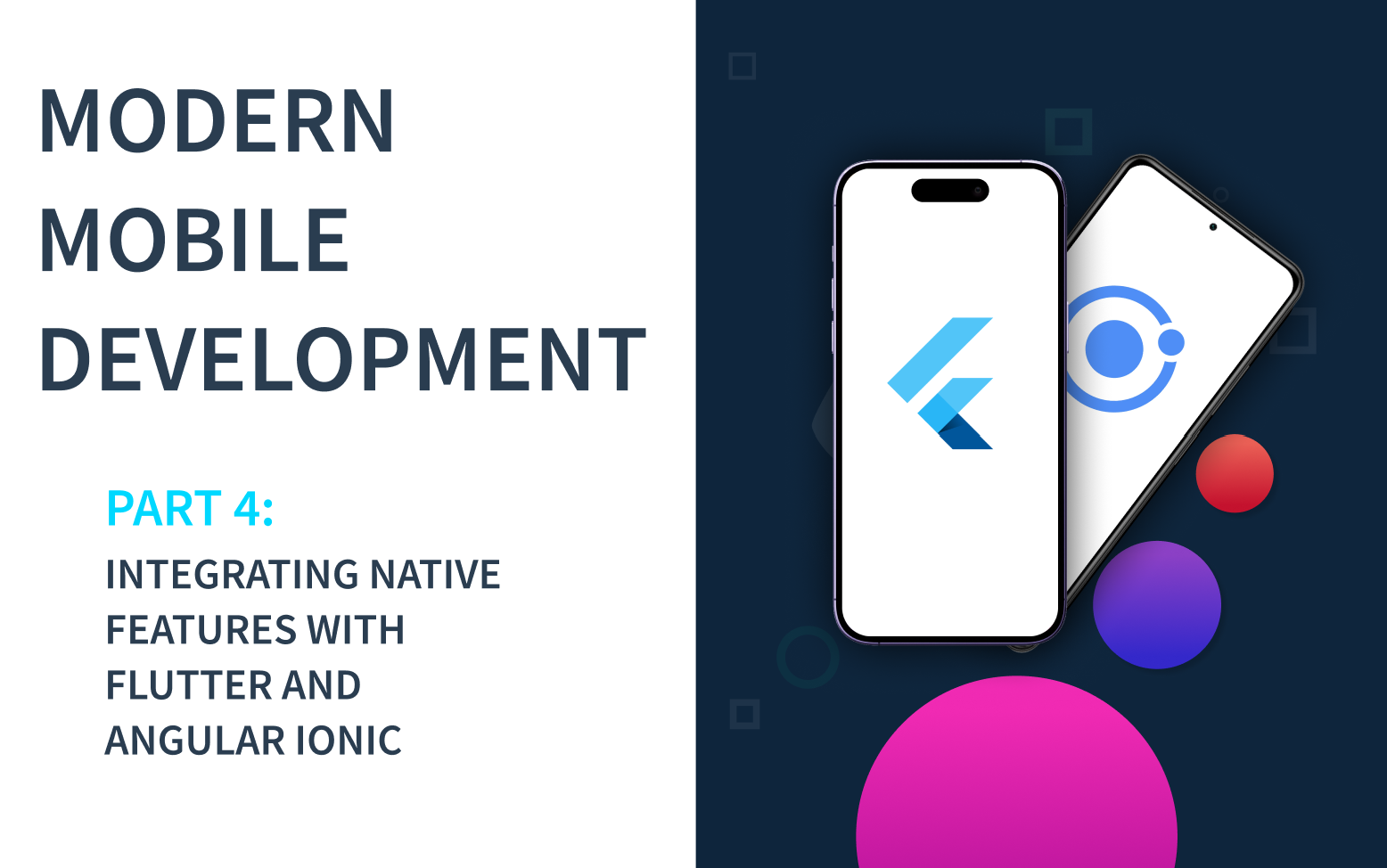
Modern Mobile Development, Part 4: Integrating Native Features with Flutter and Angular Ionic
One of the biggest advantages of cross-platform frameworks like Flutter and Angular Ionic is their ability to bridge the gap between web-like development and the native features of mobile devices. Whether it’s accessing the device camera, GPS, or even system notifications, integrating native capabilities into your app is essential for delivering a seamless and powerful user experience. In this article, we’ll explore how both Flutter and Angular Ionic make it easy to work with native features.
Flutter: Native Integration with Plugins
Flutter offers a wide range of plugins to connect with native device features. These plugins act as a bridge between Dart code and platform-specific implementations. Key steps to integrating native features in Flutter include:
- Using community-driven plugins like
image_picker,geolocator, orurl_launcher. - Creating custom platform channels for features not covered by existing plugins.
- Maintaining consistency across iOS and Android implementations with platform-specific code when necessary.
Angular Ionic: Leveraging Capacitor
Angular Ionic relies on Capacitor, its modern native runtime, to handle native integrations. Capacitor simplifies the process of working with native device features and provides a wide array of official plugins. Here’s how it works:
- Install official Capacitor plugins, such as
@capacitor/camera,@capacitor/geolocation, or@capacitor/push-notifications. - Write web-friendly JavaScript code that Capacitor automatically translates into native calls.
- Extend functionality by creating custom native plugins for advanced use cases.
Key Considerations
While integrating native features is straightforward in both frameworks, here are some points to keep in mind:
- Testing: Test native functionality on real devices to ensure consistent behavior across platforms.
- Dependencies: Keep plugin dependencies up to date to avoid compatibility issues with newer SDKs.
- Custom Plugins: For advanced use cases, understanding platform-specific development (Swift/Objective-C for iOS, Kotlin/Java for Android) can be helpful.
Conclusion: Going Beyond Basics
Whether you choose Flutter or Angular Ionic, integrating native features opens the door to a new level of app functionality and user engagement. By using plugins, Capacitor, or custom integrations, you can leverage the full potential of mobile devices while maintaining cross-platform flexibility.
Follow the Modern Mobile Development series for more insights and practical guides on building powerful, cross-platform apps!










